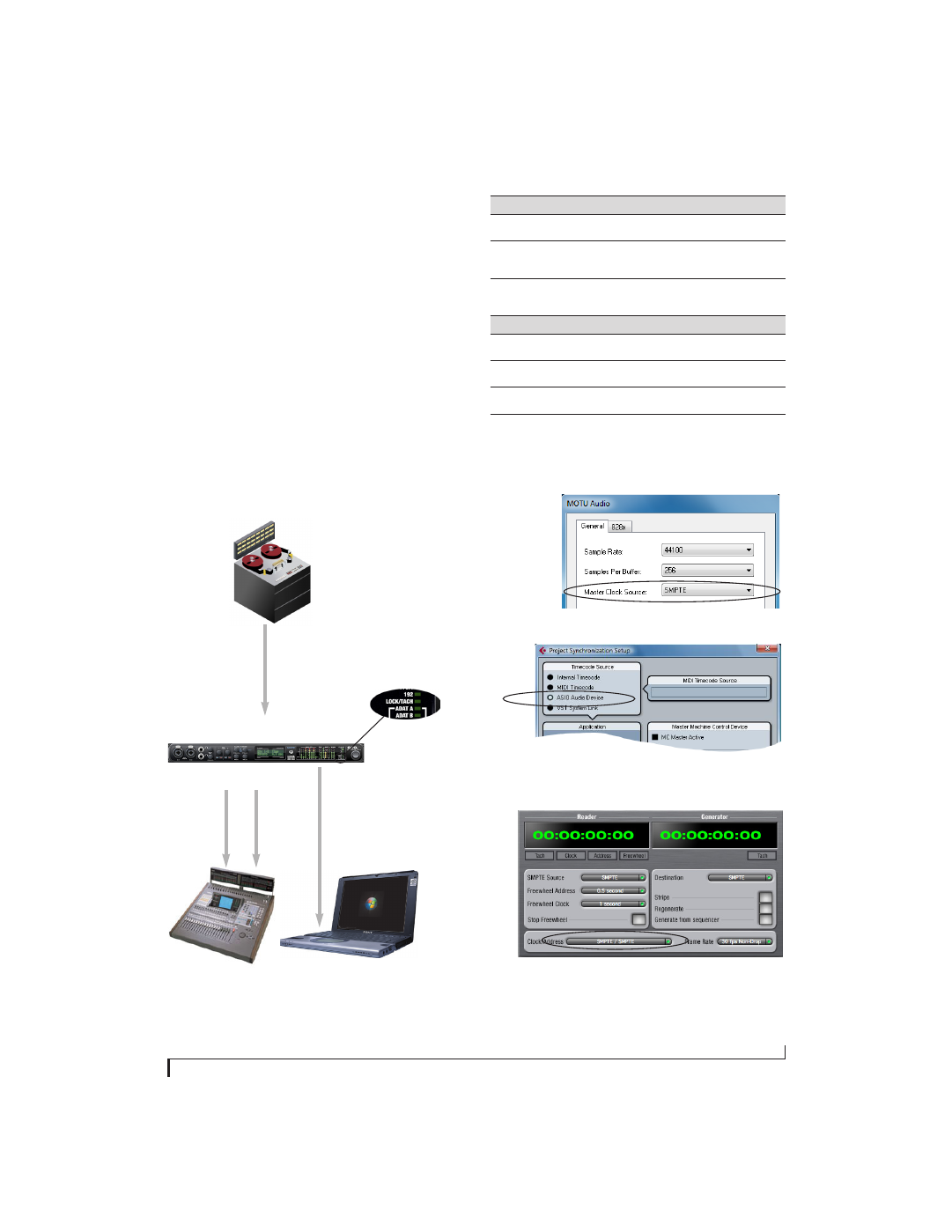Syncing to smpte timecode – MOTU 828x 28x30 Audio Interface with ThunderTechnology User Manual
Page 31

I N S T A L L I N G T H E 8 2 8 X H A R D W A R E
31
SYNCING TO SMPTE TIMECODE
The 828x system can resolve directly to SMPTE
timecode. It can also generate timecode and word
clock, under its own clock or while slaving to
timecode. Therefore, the 828x can act both as an
audio interface and as a digital audio synchronizer
to which you can slave other digital audio devices.
You can use the 828x to slave your audio software
to SMPTE as well, via sample-accurate sync (if
your host software supports it).
Other digital audio device
slaved to the 828x
Figure 4-15: Connections for synchronizing
the 828x directly to SMPTE timecode.
Choose
SMPTE
as the clock source in MOTU
Audio Console. This setting can also be made
in the MOTU SMPTE Console (shown below).
SMPTE timecode
source
audio cable bearing LTC
(Longitudinal timecode)
Thunderbolt or USB cable
Launch the MOTU SMPTE Console and specify the
SMPTE Source
,
which is the interface receiving the SMPTE timecode. Also, confirm
that the
Clock Source/Address
is
SMPTE/SMPTE
. For details about the
other settings, see chapter 10, “MOTU SMPTE Console” (page 113).
video
cable
audio
cable
SMPTE
out
Word
Out
Windows computer running Cubase or
other sample-accurate ASIO software
In Cubase, go to the Synchronization window and
choose
ASIO Audio Device
as the Timecode Base.
828x interface
SMPTE IN
quarter-inch jack
When lockup is achieved, the
LOCK/TACH light glows.
Use this setup if you have:
✓
A SMPTE timecode source, such as a multitrack tape deck.
✓
An 828x by itself, OR with another slaved device (such as a dig-
ital mixer).
✓
Host software that supports sample-accurate sync (such as
Cubase or Nuendo).
This setup provides:
✓
Continuous sync to SMPTE timecode.
✓
Sub-frame timing accuracy.
✓
Transport control from the SMPTE timecode source.
